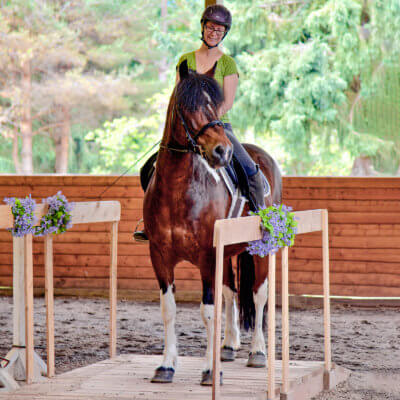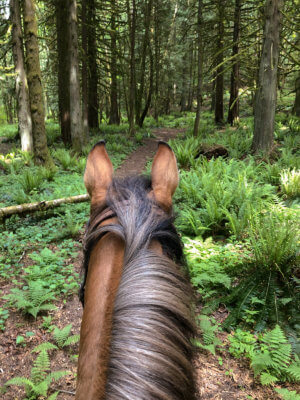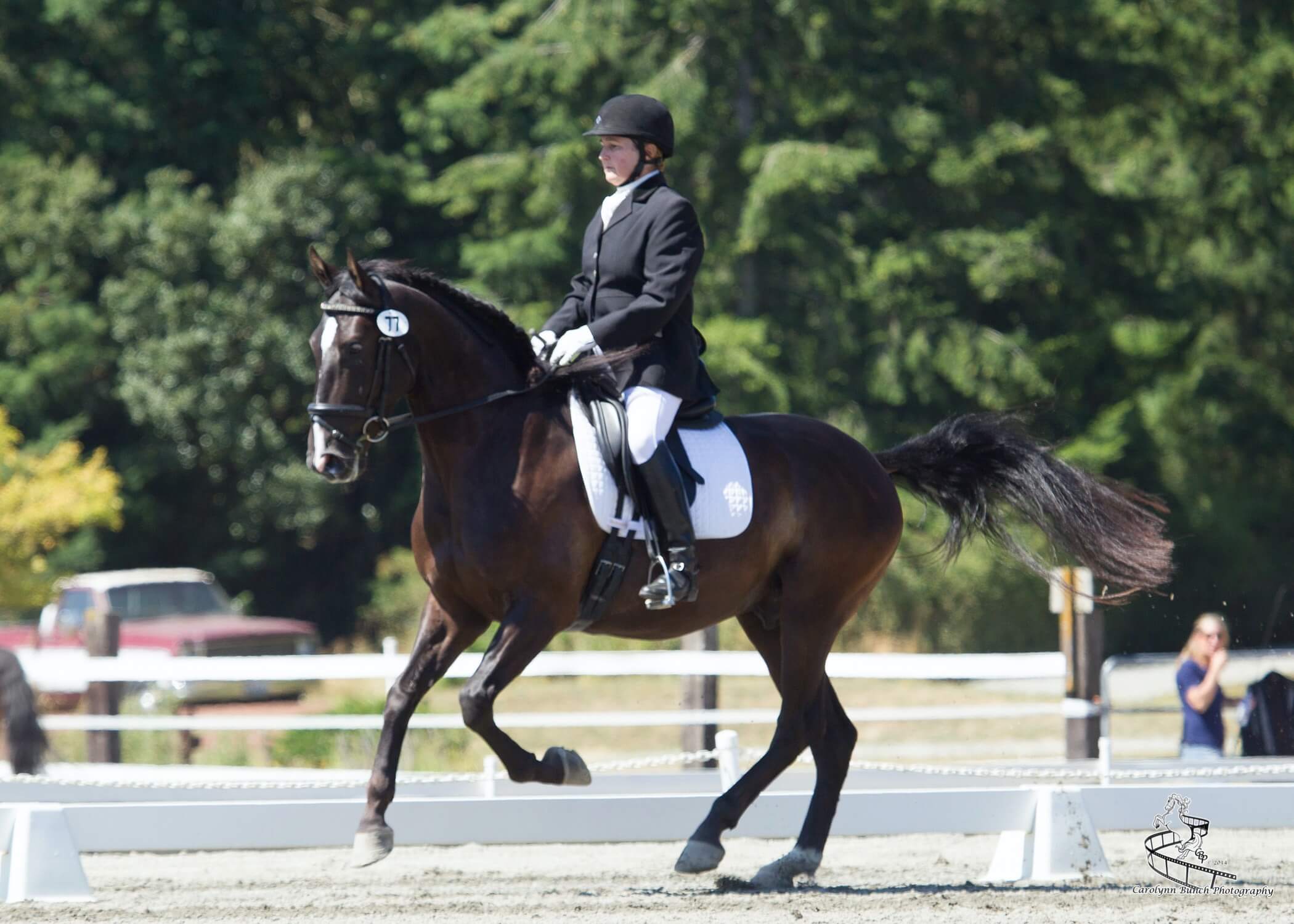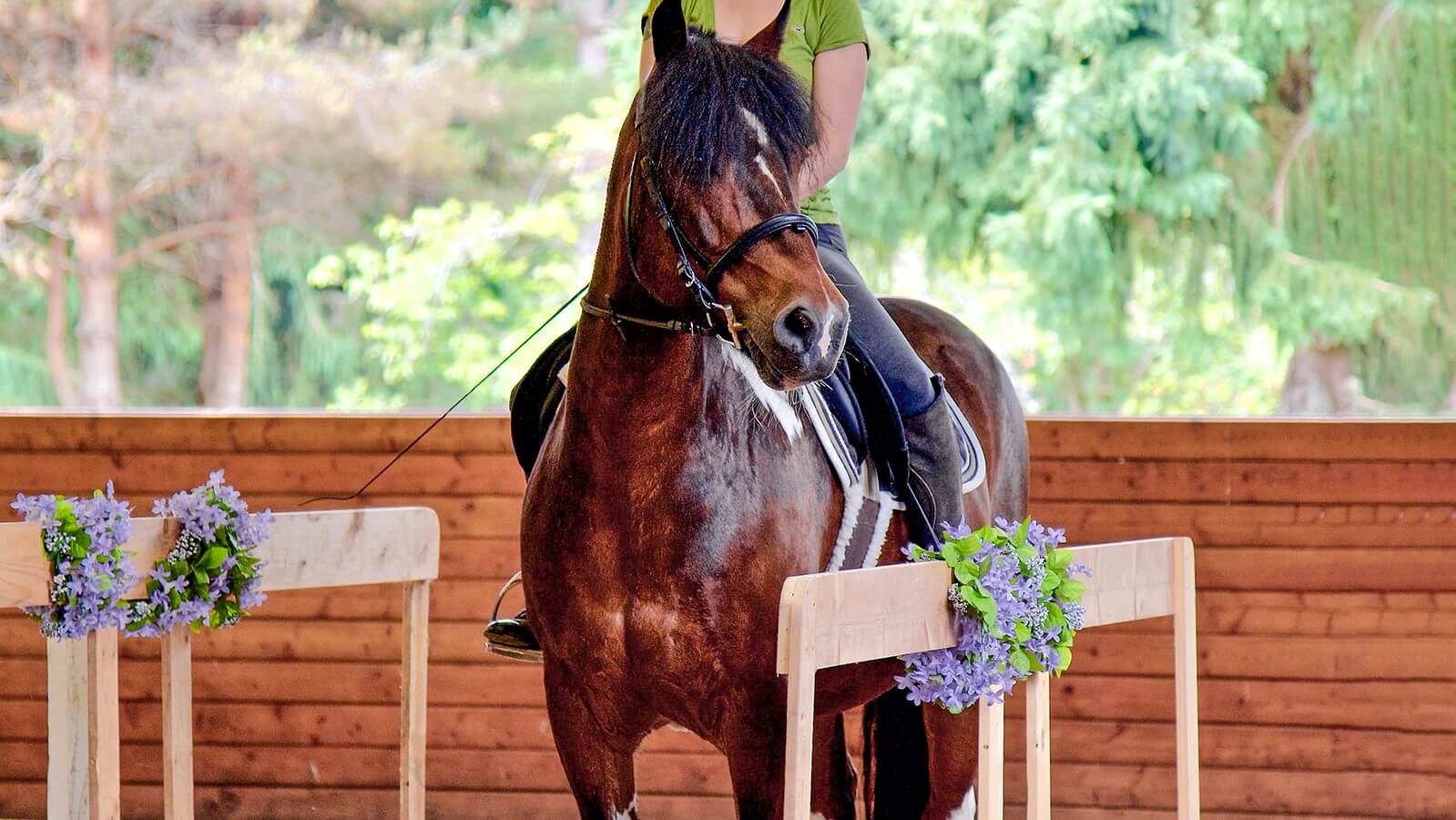Does your horse slow down every time you ride by the gate out of the arena? Does he stop or walk like his legs are made of stone as you lead him up to the mounting block? Does it sometimes feel like you’re working harder than he is and that his get-up-and-go-has-gotten-up-and-left? Does he pin his ears during transitions? These are just some of the signs that your horse has grown tired of his current arena routine.
Although it’s always important to rule out any physical issues that might be causing your horse’s attitude problems, it might be time to consider some cross-training. Here are five great ways to change things up for your horse and increase the fun factor for both of you. You’ll improve your horse’s brain and his body too.
- Liberty Work
Liberty work can “rewire” a horse’s brain by using natural equine behavior to form connections between horse and trainer. Once we’re no longer attached to our horse with a halter and lead rope (or bridle) things begin to change.
In liberty work we read the horse’s body language to know what they feel and want. When the horse notices the human “speaking” in a new way—one that doesn’t involve force—trust and friendship grow.
Gestures, body position, eye contact, and expression are used to communicate. This means we’re using a physical language the horse naturally understands. Add in some clicker training for positive reinforcement and perhaps even some trick training to get the horse feeling good about himself, and he’ll show begin to show renewed interest in his human.
- Obstacle Work
 All kinds of obstacle work, like opening gates, crossing bridges, rounding barrels or poles, or those found on a mountain trail course are great for a horse’s mind. You don’t need a fancy or expensive trail course. Bring in a few barrels, poles, or a tarp to your arena; ride over some small jumps, or weave through a course of pole-bending poles.
All kinds of obstacle work, like opening gates, crossing bridges, rounding barrels or poles, or those found on a mountain trail course are great for a horse’s mind. You don’t need a fancy or expensive trail course. Bring in a few barrels, poles, or a tarp to your arena; ride over some small jumps, or weave through a course of pole-bending poles.
These simple exercises give your horse a job to do which turns regular arena figures into something that suddenly makes more sense to a horse. Also, the physical demands of negotiating the obstacles helps your horse’s fitness and agility and will make holes in your training obvious.
- Cavalleti Work
Cavalleti work involves riding over poles and small jumps set at different distances in all gaits. The patterns and goals are varied and can range from simple walk exercises to more difficult canter exercises. The poles need to be set at correct distances for various gaits and for different purposes, so taking some lessons or attending clinics to learn how to set them is important.
This work is fun for most horses and is vigorous exercise that supples and strengthens the entire body of the horse. Riders need to learn to be aware of rhythm, timing and tempo.
- Trail Riding
 This is obvious. Who doesn’t love to go out on the trail? Horses and people benefit from time out in nature and away from walls. Uneven ground and crossing natural obstacles like logs and water challenges the horse both physically and mentally. And it doesn’t have to be intense mountain trails. An easy stroll through fields or woods makes everyone breathe easier.
This is obvious. Who doesn’t love to go out on the trail? Horses and people benefit from time out in nature and away from walls. Uneven ground and crossing natural obstacles like logs and water challenges the horse both physically and mentally. And it doesn’t have to be intense mountain trails. An easy stroll through fields or woods makes everyone breathe easier.
If you’re not ready to go beyond the fences of an arena, a change of scenery like hauling out to a different arena can work wonders for a horse’s attitude.
- Arena Exercises
I once had a teacher who said, “If your horse is bored in the arena, you’re not using your imagination well in your training.” Good training includes exercises and patterns that captivate and challenge the horse’s mind and body. Go beyond endless 20-meter circles or riding straight around the outside track of the arena. There are many books of exercises or seek out instruction from someone who uses exercises well in their teaching.
Horses can experience boredom and burnout, similar to humans. Good training makes room for “horseplay” by exploring new things to do with horses and by losing the perfectionism we can all easily slip into, especially when we have competitive goals. Take time to bring joy into your training by varying the intensity and kind of work you do with your horses.
See this article in the August 2021 online edition:

Kim Roe grew up riding on the family ranch and competed in Western rail classes, trail horse, reining, working cow, and hunter/jumper. She trained her first horse for money at 12 years old, starting a pony for a neighbor.
Kim has been a professional dressage instructor in Washington state for over 30 years, training hundreds of horses and students through the levels. In recent years Kim has become involved in Working Equitation and is a small ‘r’ Working Equitation judge with WE United.
Kim is the editor of the Northwest Horse Source Magazine, and also a writer, photographer, and poet. She owns and manages Blue Gate Farm in Deming, Washington where she continues to be passionate about helping horses and riders in many disciplines.






